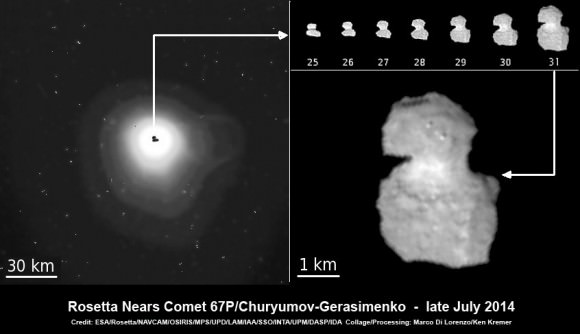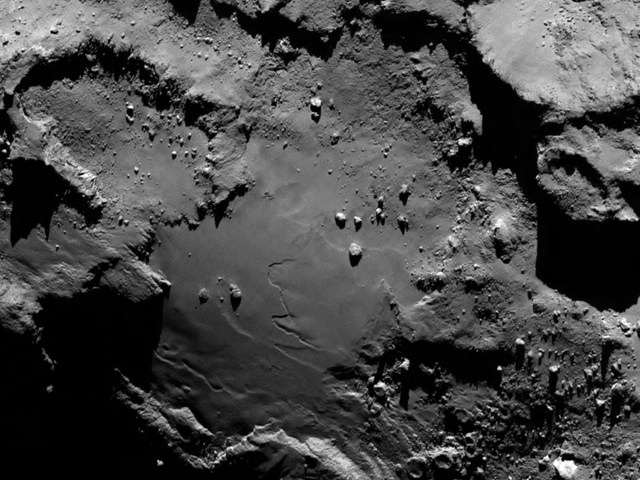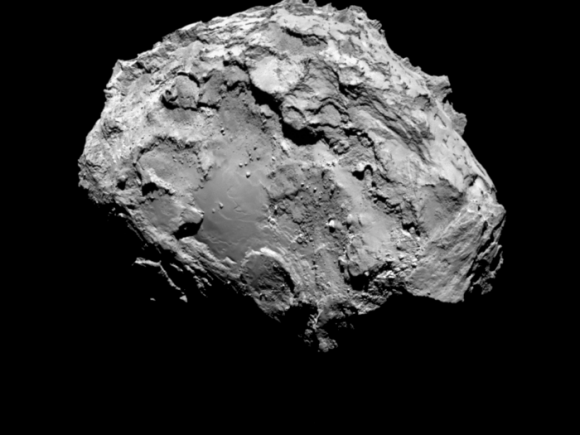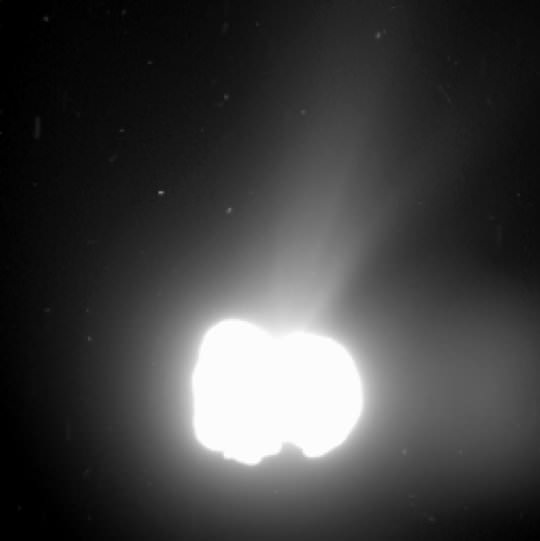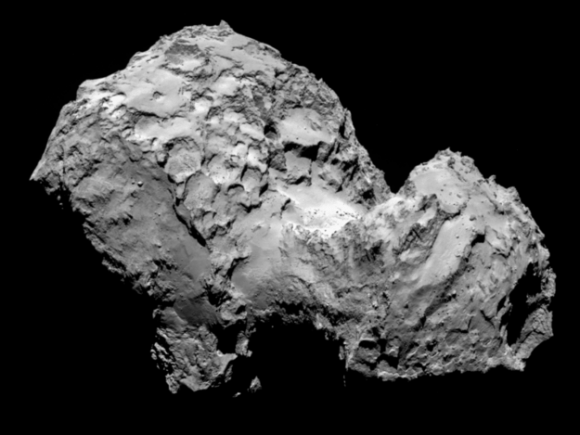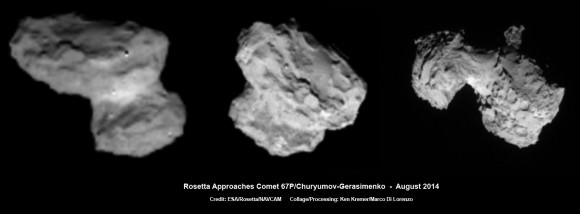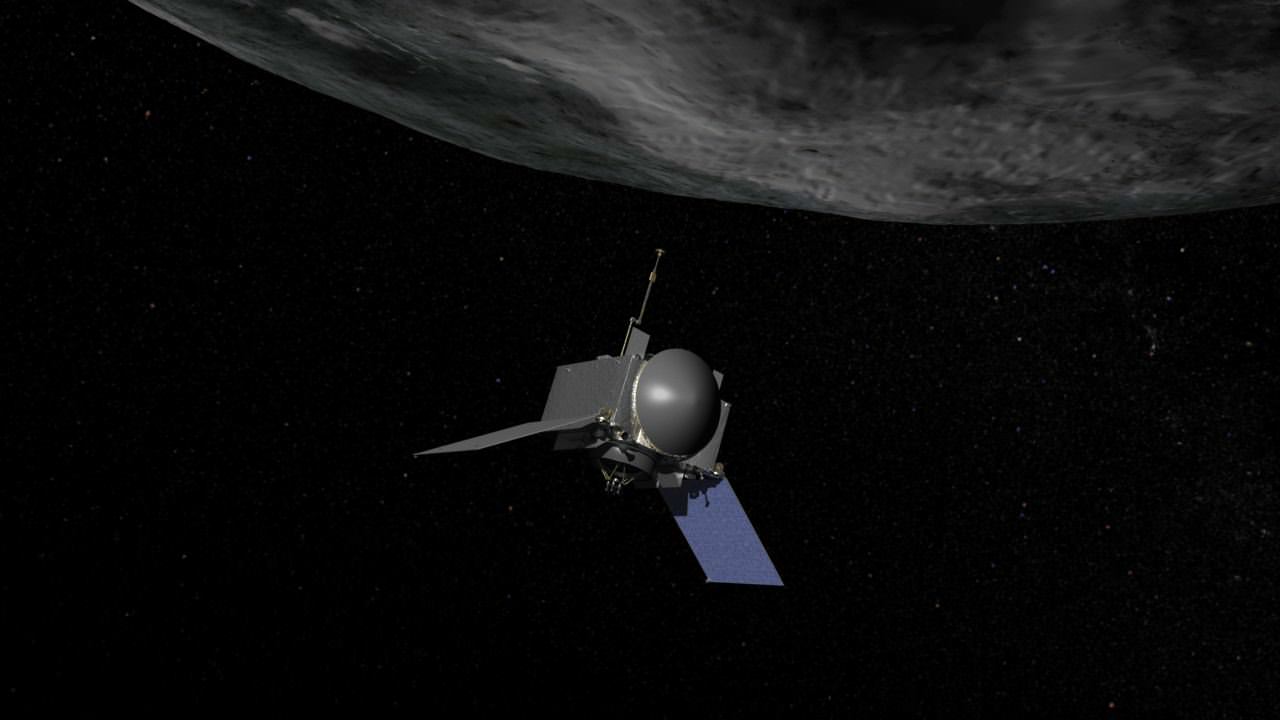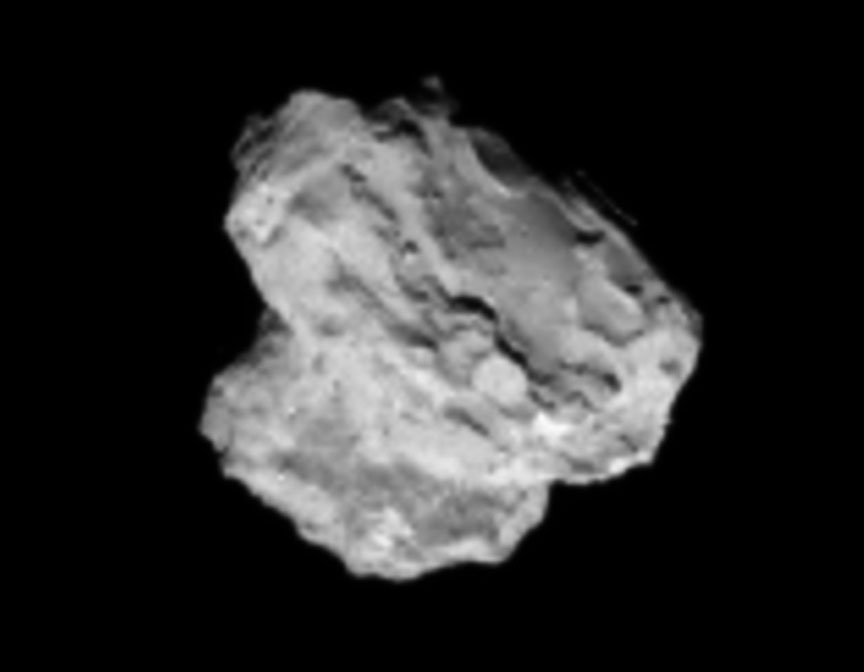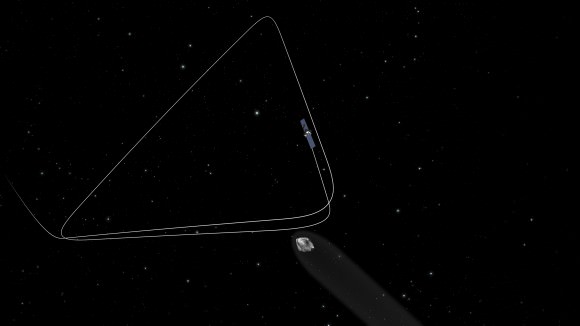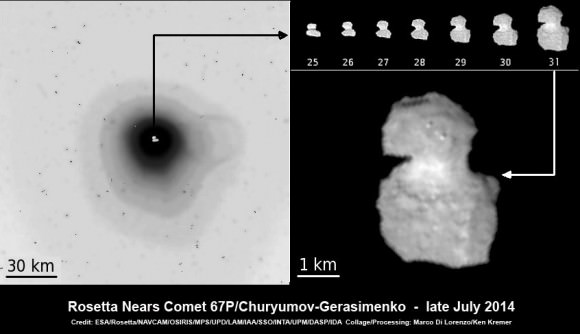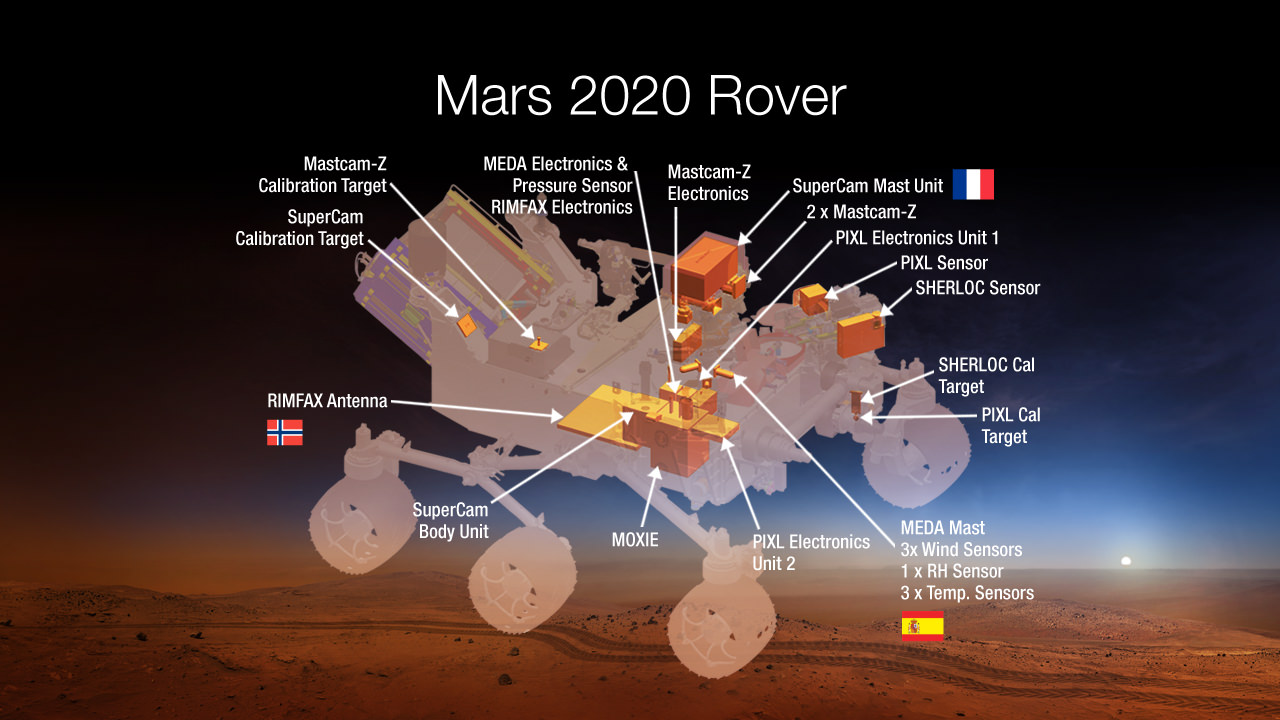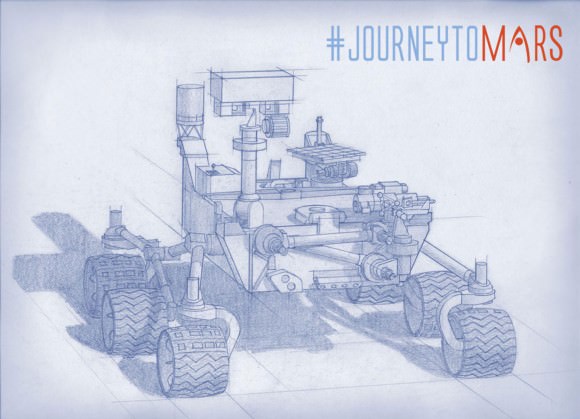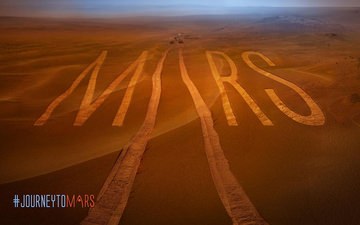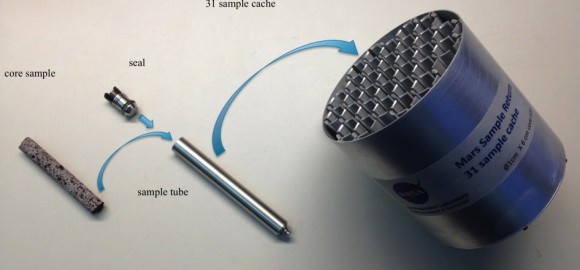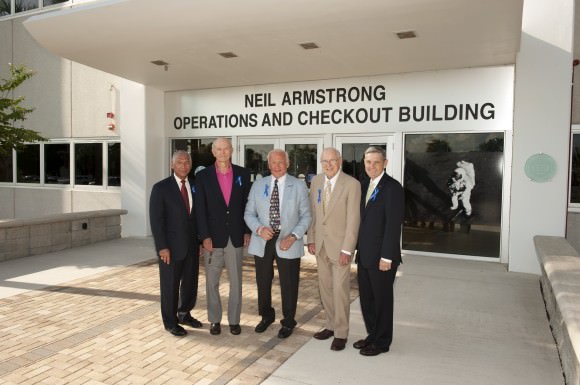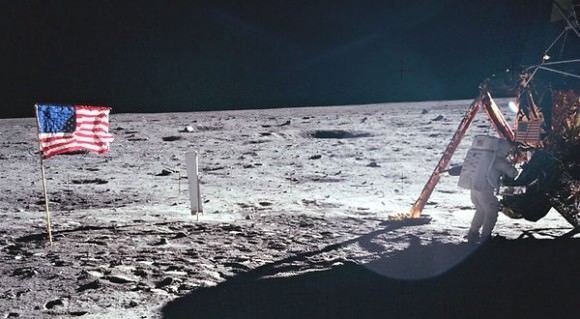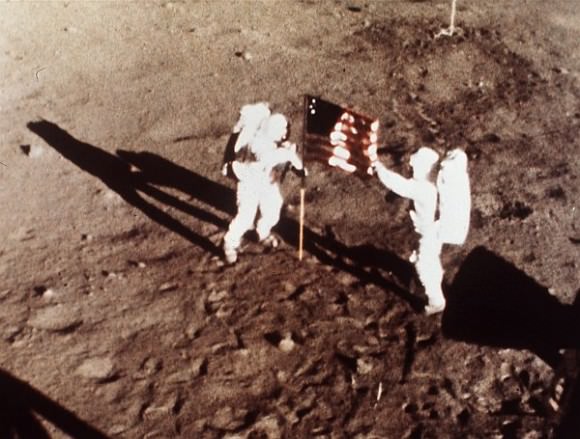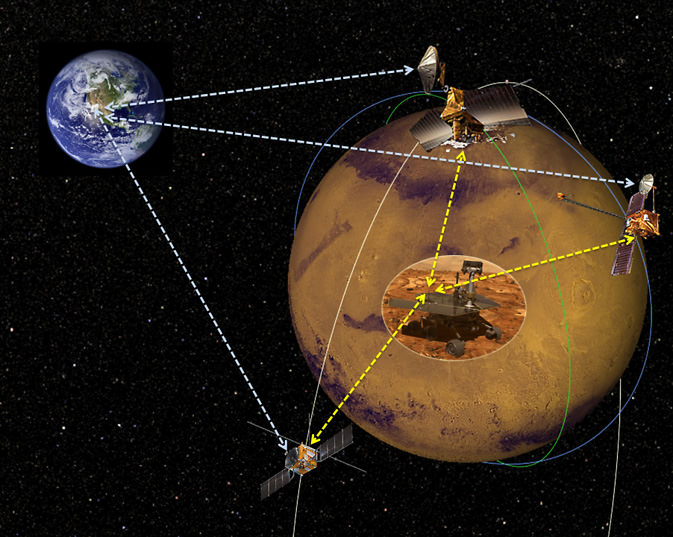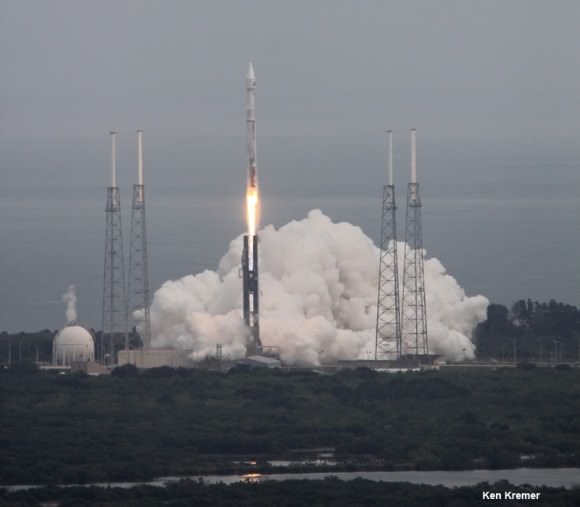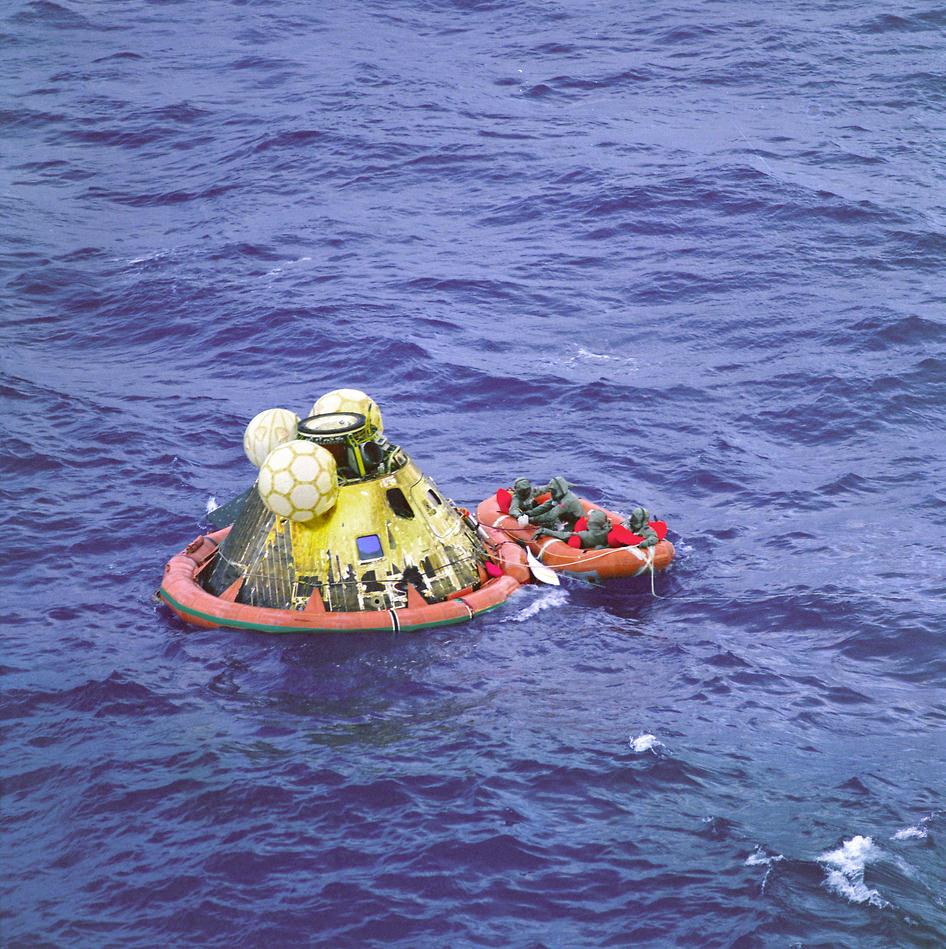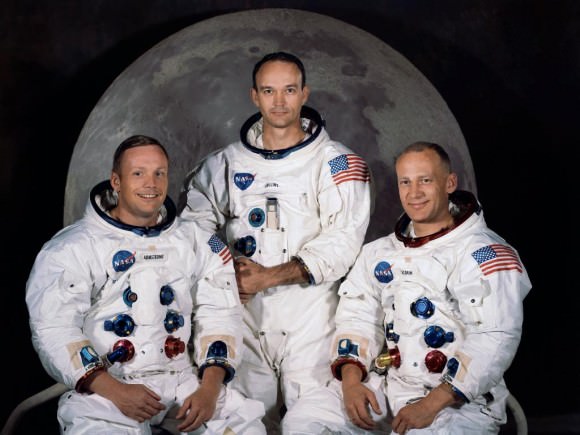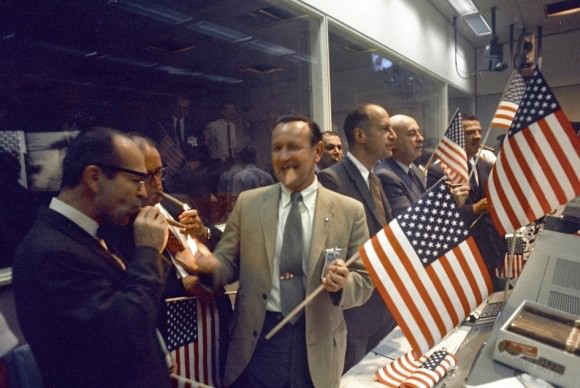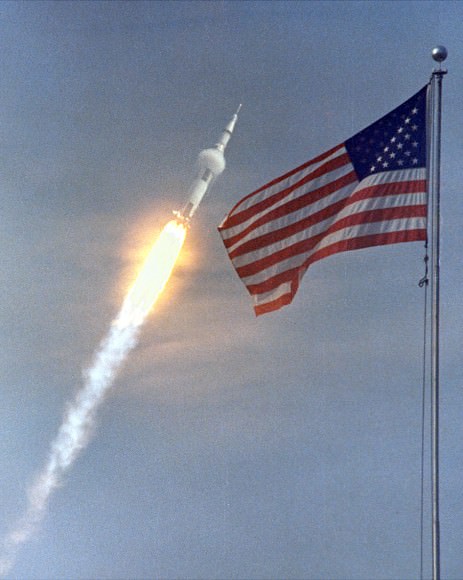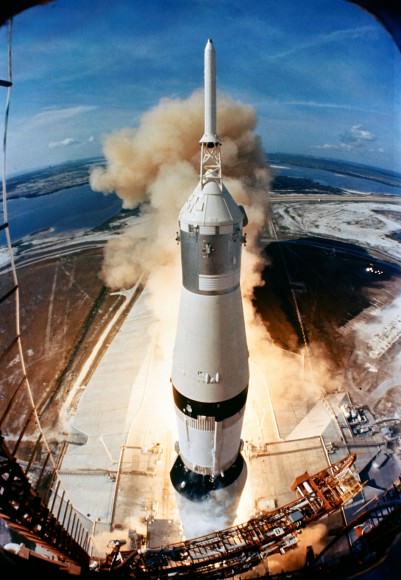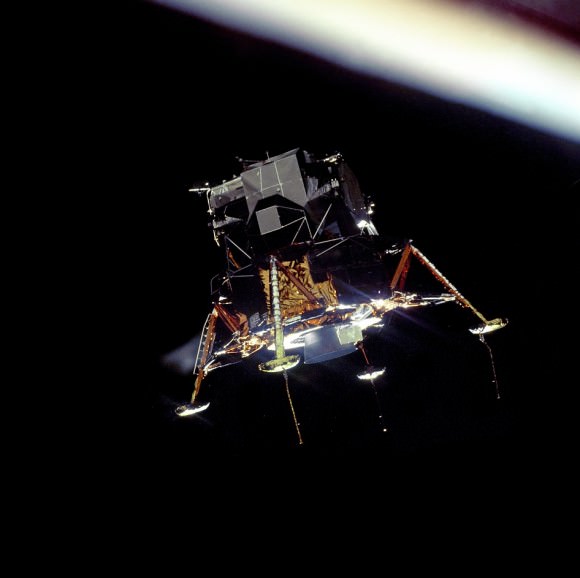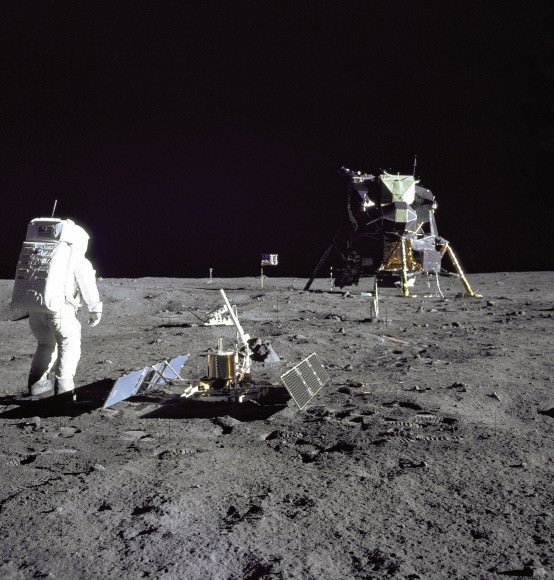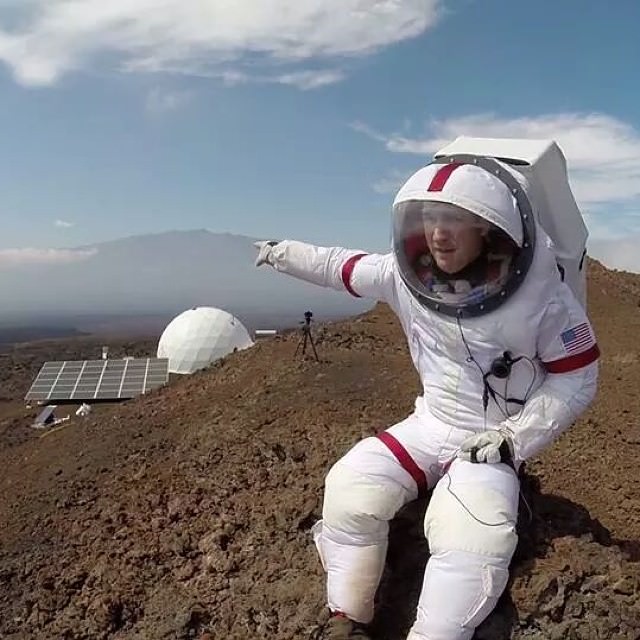The image of Comet 67P/Churyumov-Gerasimenko was taken by Rosetta’s OSIRIS narrow-angle camera on 3 August 2014 from a distance of 285 km. Credits: ESA/Rosetta/MPS for OSIRIS Team MPS/UPD/LAM/IAA/SSO/INTA/UPM/DASP/IDA
Story updated[/caption]
“We’re at the comet! Yes,” exclaimed Rosetta Spacecraft Operations Manager Sylvain Lodiot, confirming the spacecraft’s historic arrival at Comet 67P/Churyumov-Gerasimenko during a live webcast this morning, Aug. 6, from mission control at ESA’s spacecraft operations centre (ESOC) in Darmstadt, Germany.
The European Space Agency’s (ESA) Rosetta comet hunter successfully reached its long sought destination after a flawless orbital thruster firing at 11 AM CEST to become the first spacecraft in history to rendezvous with a comet and enter orbit aimed at an ambitious long term quest to produce ground breaking science.
“Ten years we’ve been in the car waiting to get to scientific Disneyland and we haven’t even gotten out of the car yet and look at what’s outside the window,” Mark McCaughrean, senior scientific adviser to ESA’s Science Directorate, said during today’s webcast. “It’s just astonishing.”
“The really big question is where did we and the solar system we live in come from? How did water and the complex organic molecules that build up life get to this planet? Water and life. These are the questions that motivate everybody.”
“Rosetta is indeed the ‘rosetta stone’ that will unlock this treasure chest to all comets.”
Today’s rendezvous climaxed Rosetta’s decade long and 6.4 billion kilometers (4 Billion miles) hot pursuit through interplanetary space for a cosmic kiss with Comet 67P while speeding towards the inner Solar System at nearly 55,000 kilometers per hour.
The probe is sending back spectacular up close high resolution imagery of the mysterious binary, two lobed comet, merged at a bright band at the narrow neck of the celestial wanderer that looks like a ‘rubber ducky.’
“This is the best comet nucleus ever resolved in space with the sharpest ever views of the nucleus, with 5.5.meter pixel resolution,” said Holger Sierks, principal investigator for Rosetta’s OSIRIS camera from the Max Planck Institute for Solar System Research in Gottingen, Germany, during the webcast.
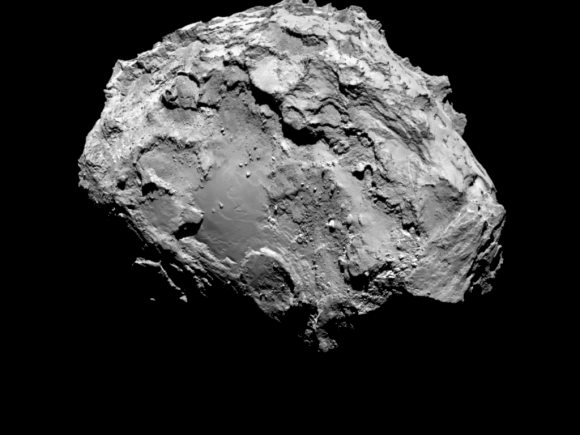
“We now see lots of structure and details. Lots of topography is visible on the surface. We see the nucleus and outgassing activity. The outbursts are seen with overexposed images. It’s really fantastic”
“There is a big depression on the head and 150 meter high cliffs, rubble piles, and also we see smooth areas and plains. The neck is about 1000 meters deep and is a cool area. There is outgassing visible from the neck.”
“We see a village of house size boulders. Some about 10 meters in size and bigger they vary in brightness. And some with sharp edges. We don’t know their composition yet.”
“We don’t understand how its created yet. That’s what we’ll find out in coming months as we get closer.”
“Rosetta has arrived and will get even closer. We’ll get ten times the resolution compared to now.”
“The comet is a story about us. It will be the key in cometary science. Where did it form? What does it tell us about the water on Earth and the early solar system and where it come from?”
Following the blastoff on 2 March 2004 tucked inside the payload fairing of an Ariane 5 G+ rocket from Europe’s spaceport in Kourou, French Guiana, Rosetta traveled on a complex trajectory.
It conducted four gravity assist speed boosting slingshot maneuvers, three at Earth and one at Mars, to gain sufficient velocity to reach the comet, Lodiot explained.
The 1.3 Billion euro robotic emissary from Earth is now orbiting about 100 kilometers (62 miles) above the comet’s surface, some 405 million kilometers (250 million mi.) from Earth, about half way between the orbits of Jupiter and Mars.
The main event today, Aug. 6, was to complete an absolutely critical thruster firing which was the last of 10 orbit correction maneuvers (OCM’s). It started precisely on time at 11:00 AM CEST/09:00 GMT/5:00 AM EST, said Lodiot. The signal was one of the cleanest of the entire mission.
The orbital insertion engine firing dubbed the Close Approach Trajectory – Insertion (CATI) burn was scheduled to last about 6 minutes 26 seconds. Confirmation of a successful burn came some 28 minutes later.
“We’re at the comet! Yes,” Lodiot excitedly announced live whereupon the crowd of team members, dignitaries and journalists at ESOC erupted in cheers.
For the next 17 months, the probe will escort comet 67P as it loops around the Sun towards perihelion in August 2015 and then continue along on the outbound voyage towards Jupiter.
ESA’s incredibly bold mission will also deploy the three-legged piggybacked Philae lander to touch down and drill into and sample its incredibly varied surface a little over three months from now.
Together, Rosetta and Philae are equipped with a suite of 21 science instruments to conduct an unprecedented investigation to characterize the 4 km wide (2.5 mi.) comet and study how the pristine frozen body composed of ice and rock is transformed by the warmth of the Sun.
Comets are believed to have delivered a vast quantity of water to Earth. They may have also seeded Earth with organic molecules.
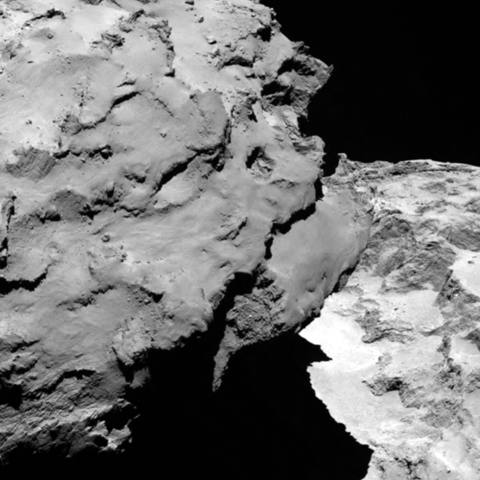
The image was taken from a distance of 120 km and the image resolution is 2.2 metres per pixel. Credit: ESA/Rosetta/MPS for OSIRIS Team MPS/UPD/LAM/IAA/SSO/INTA/UPM/DASP/IDA
Rosetta and Philae will also search for organic molecules, nucleic acids and amino acids, the building blocks for life as we know it by sampling and analyzing the comets nucleus and coma cloud of gas and dust.
“The first coma sampling could happen as early as next week,” said Matt Taylor, ESA’s Rosetta project scientist on the webcast.
“Is this double-lobed structure built from two separate comets that came together in the Solar System’s history, or is it one comet that has eroded dramatically and asymmetrically over time? Rosetta, by design, is in the best place to study one of these unique objects.”
After thoroughly mapping the comet, the team will command Rosetta to move even lower to 50 km altitude and then even lower to 30 km and less.
The scientists and engineers will search for up to five possible landing sites for Philae to prepare for the touchdown in mid-November 2014.
“We want to characterize the nucleus so we can land in November,” said Taylor. “We will have a ringside along with the comet as it moves inwards to the sun and then further out.”
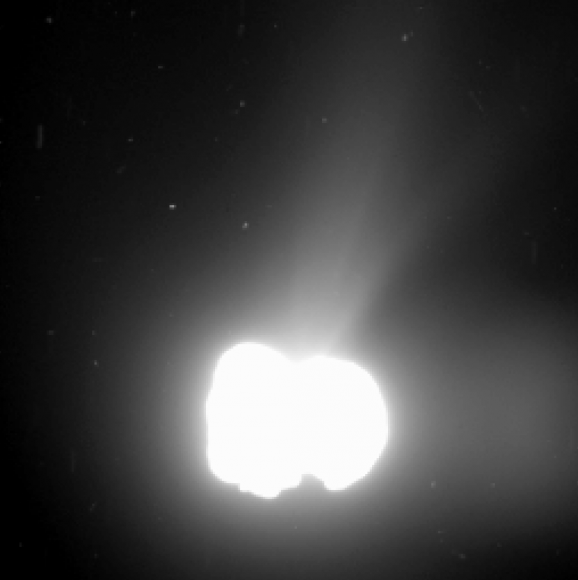
Studying comets will shed light on the history of water and life on Earth.
“We are going to places we have never been to before,” said Jean-Jacques Dordain, ESA’s Director General during the webcast.
“We want to get answers to questions to the origin to water and complex molecules on Earth. This opens up even more new questions than answers.”
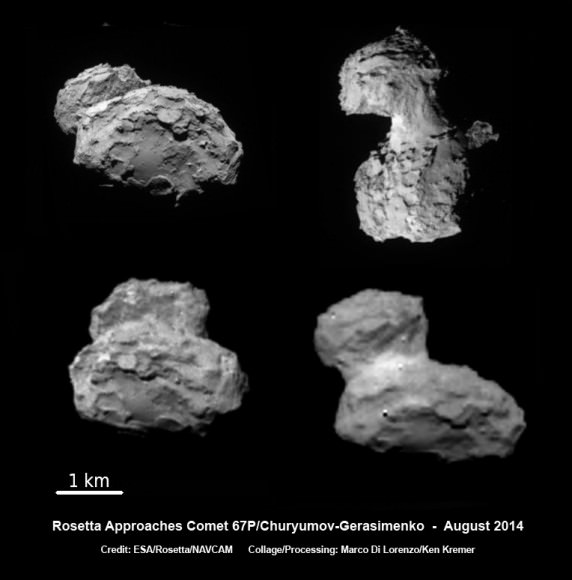
Watch for updates.
Stay tuned here for Ken’s continuing Rosetta, Curiosity, Opportunity, Orion, SpaceX, Boeing, Orbital Sciences, commercial space, MAVEN, MOM, Mars and more Earth and Planetary science and human spaceflight news.
……..
Read my Rosetta series here:
Rosetta on Final Approach to Historic Comet Rendezvous – Watch Live Here
Rosetta Probe Swoops Closer to Comet Destination than ISS is to Earth and Reveals Exquisite Views
Rosetta Orbiter less than 500 Kilometers from Comet 67P Following Penultimate Trajectory Burn
Rosetta Closing in on Comet 67P/Churyumov-Gerasimenko after Decade Long Chase
